en:localisation_et_commande_embarquee_d_un_drone_en_utilisant_la_vision_stereoscopique
Differences
This shows you the differences between two versions of the page.
| Both sides previous revisionPrevious revisionNext revision | Previous revision | ||
| en:localisation_et_commande_embarquee_d_un_drone_en_utilisant_la_vision_stereoscopique [2016/04/07 17:22] – castillo | en:localisation_et_commande_embarquee_d_un_drone_en_utilisant_la_vision_stereoscopique [2016/04/07 17:34] (current) – castillo | ||
|---|---|---|---|
| Line 15: | Line 15: | ||
| Grant from __Mexicain Government__ \\ | Grant from __Mexicain Government__ \\ | ||
| Location: Heudiasyc \\ | Location: Heudiasyc \\ | ||
| - | Date PhD finished: November, 2011 \\ | + | Date PhD finished: |
| \\ | \\ | ||
| - | __Current position__: **MdC at GIPSA Lab**\\ | + | __Current position__: **MdC at GIPSA Lab since 2013**\\ |
| \\ | \\ | ||
| Line 25: | Line 25: | ||
| == Abstract == | == Abstract == | ||
| - | The present document addresses, theoretically and experimentally, | + | Visual servoing is a control |
| - | for Unmanned Aerial Vehicles (UAVs) in autonomous and semi-autonomous navigation. | + | visual servoing schemes are proposed |
| - | According with the multidisciplinary nature of the studied problems, | + | to positioning and navigation task. Concerning the quadrotor |
| - | techniques and theories are covered in the fields of robotics, automatic | + | control scheme whose inner-loop |
| - | science, computer vision and embedded systems, among others.\\ | + | outer-loop (slow dynamics) deals with translational dynamics.\\ |
| - | + | ||
| - | As part of this thesis, | + | |
| - | explore and evaluate various theories and techniques of interest for autonomous navigation. | + | |
| - | The first prototype is a quadrotor | + | |
| - | developed in our lab. The second testbed is composed by a non expensive commercial | + | |
| - | quadrotor | + | |
| - | Operating System | + | |
| - | automatic control strategies in an easy, fast and safe way.\\ | + | |
| - | In addition, this work provides an study of data fusion techniques looking to enhance | + | Also, a nonlinear controller based on separated saturations for a quadrotor is |
| - | the UAVs pose estimation provided by commonly used sensors. Two strategies | + | proposed to stabilize it attitude. The linear position and velocity of the rotorcraft |
| - | in particular, an Extended Kalman Filter (EKF) and a Particle Filter (PF). Both estimators | + | obtained by using a vision-based algorithm via a monocular caméra. The dynamic |
| - | are adapted for the system | + | model of the quadrotor is presented using the Newton-Euler formalism. |
| - | of the UAV position, | + | In other vision |
| - | the developed algorithms while adding noise from real GPS (Global Positioning System) | + | and velocity |
| - | measurements.\\ | + | at a target placed on a wall. Quadrotor |
| + | vertically downwards running an optical flow algorithm. Experimental tests | ||
| + | showed that the quadrotor performed well at hover flight using the proposed vision | ||
| + | based control system.\\ | ||
| - | Safe and accurate navigation for either autonomous trajectory tracking or haptic teleoperation | + | – **Quadrotor vision-based**\\ |
| - | of quadrotors is presented as well. A second order Sliding Mode (2-SM) control | + | |
| - | algorithm is used to track trajectories while avoiding frontal collisions in autonomous flight. | + | |
| - | The time-scale separation of the translational and rotational dynamics allows to design position | + | |
| - | controllers by giving desired references in the roll and pitch angles, which is suitable | + | |
| - | for quadrotors equipped with an internal attitude controller. The 2-SM control allows to | + | |
| - | add robustness to the closed-loop system and attenuates the chattering effect. A Lyapunov | + | |
| - | based analysis probes the system stability. Vision algorithms are employed to estimate the | + | |
| - | pose of the vehicle using only a monocular SLAM (Simultaneous Localization and Mapping) | + | |
| - | fused with inertial measurements. Distance to potential obstacles is detected and | + | |
| - | computed using the sparse depth map from the vision algorithm. For teleoperation tests, | + | |
| - | a haptic device is employed to feedback information to the pilot about possible collisions, | + | |
| - | by exerting opposite forces. The proposed strategies are successfully tested in real-time | + | |
| - | experiments, | + | |
| - | Also, conception and development | + | The same system was used to estimate the 3D position |
| - | interact with human users by following them autonomously, | + | a trajectory using vanishing points. The performance of the vision and control |
| - | work. Once a face is detected by means of a Haar cascade classifier, it is tracked applying | + | algorithms has been tested in a real application |
| - | a Kalman Filter | + | painted |
| - | is obtained at a high rate. A linear Proportional Derivative (PD) controller regulates the | + | flow algorithm. The estimated position and velocity information obtained |
| - | UAV’s position in order to keep a constant distance to the face, employing as well the extra | + | from the vision system |
| - | available information from the embedded | + | of the inertial measurement unit to compute the control inputs. It has been |
| - | out through different conditions, showing good performance even under disadvantageous | + | shown that the proposed control scheme achieves the tracking objective of |
| - | scenarios like outdoor flight, being robust against illumination changes, wind perturbations, | + | the visual reference.\\ |
| - | image noise and the presence | + | |
| - | \\ | + | – **Octarotor vision-based** \\ |
| + | |||
| + | In this thesis, it is presented | ||
| + | using image-based visual servoing | ||
| + | control of an UAV requires a precise measurements and/ | ||
| + | vehicle’s pose and also the knowledge of its surrounding environment. In | ||
| + | order to control the orientation and the position | ||
| + | to a target, we propose to use a navigation system based on binocular vision | ||
| + | system combined with inertial sensors. This combination of sensors, allows | ||
| + | us to get a complete characterization of the state of aerial vehicle. In other | ||
| + | words, using the stereo vision system we are able to estimate | ||
| + | 3D position, while from the inertial | ||
| + | rotorcraft. A semi-embedded navigation system combining stereo vision with | ||
| + | inertial information is proposed.\\ | ||
| + | |||
| + | The hierarchical control approach is appropriate to stabilize the 6DOF dynamics | ||
| + | of the quadrotor, it takes advantage of the time scale separation between rotational | ||
| + | (fast) and translational (slow) dynamics. For this reason, despite the lower frequency | ||
| + | rate of vision-based measurements is able to stabilize in real-time the quadrotor | ||
| + | translational dynamics. This combination of measurement strategies has many advantages | ||
| + | because one works very well at low speeds (vision system) | ||
| + | high speeds (inertial sensors). Both work at different sample rate. Taking advantage | ||
| + | of this property we have obtained a simplified dynamical model of the rotorcraft. | ||
| + | This model is given by six independent double integrators which have been stabilized | ||
| + | using proportional-derivative (PD) control. The real-time experiments have | ||
| + | shown an acceptable performance of the flying machine applying the control law | ||
| + | and sensing system proposed.\\ | ||
| - | Finally, this thesis deals with the problem of implementing a safe and fast transportation | + | An embedded control system for the mini rotorcraft is implemented. The control |
| - | system using an UAV kind quadrotor with a cable suspended load. The objective consists | + | is validated by experimental tests. Experimental results show that the implementation |
| - | in transporting | + | of the control law on an embedded control |
| - | swing in the cable. An Interconnection and Damping Assignment-Passivity Based Control | + | hovering in indoors |
| - | (IDA-PBC) for the system | + | developed to validate |
| - | experiments. The use of this control technique avoids | + | highlights the potential |
| - | swing angle measurement. An experimental platform composed by a quadrotor equipped | + | UAV. |
| - | with a rigid rod with two degrees | + | |
| - | achieved via monocular vision. | + | |
| \\ | \\ | ||
| \\ | \\ | ||
| \\ | \\ | ||




